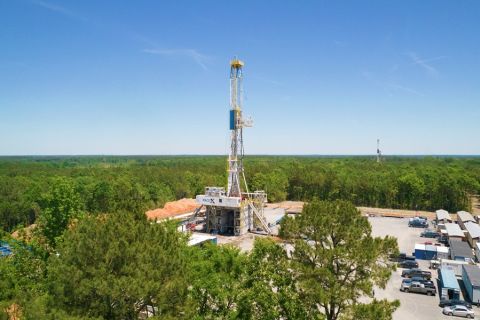U.S. shale oil producers are facing higher costs in the nation's largest oil field after regulators restricted the use of some wastewater disposal wells in West Texas after the latest in a series of powerful earthquakes struck the region.
Wastewater that comes up with oil and gas production is often pumped back underground, a practice tied to a rise in earthquakes in Oklahoma and Texas oilfields. Regulators in both states have set limits on how much water can be injected, particularly into deep wells.
In mid-November, a magnitude 5.4 earthquake hit an area where operators already were required to reduce disposal volumes. That led Texas to further reduce volumes to 162,000 bbl/d by mid-2023, 68% less water from early 2022 levels in a producing area.
If another magnitude 4.5 or higher quake occurs in that area, all deep wells within the boundary will shut for 24 months from the date of the event, regulators said. The area, called Northern Culberson-Reeves Seismic Response Area, is one of three areas with similar restrictions.
It is close to the New Mexico border and has 78 active disposal wells. The latest restrictions affect 19 new deep wells that together were handling some 400,000 bbl of water per day, according to data from researcher B3 Insight.
There is a "very real possibility" of another large quake occurring, said Laura Capper, chief executive of CAP Resources, a water management and risk mitigation consultancy.
"Absolute shut-in of deep wells in the area would cause a significant logistics issue to maintain oil and gas production in highly productive fields in New Mexico and West Texas," she said.
A ban on using those wells would require oil producers to transport wastewater out of the region, adding to their costs of oil production but would be unlikely to halt oil production.
The new injection limits encompass 10 deep wastewater wells operated by Chevron Corp., which are permitted to handle some 745,000 bbl of water per day, and nine deep wells operated by Coterra Energy, which can handle 615,000 bbl of water per day.
"Since early 2022, Coterra has decreased its deep disposal volumes in the Delaware Basin by over 50% and expects to have little to no disposal into the deep zone by mid-year 2023, therefore we do not see an impact on production," a spokesperson said.
Chevron did not immediately respond to a request for comment.
Shale executives this year warned that output growth could continue to slow. Production in the Permian is forecast to rise by 37,300 bbl/d next month, to 5.58 MMbbl/d, the slower than gains seen in recent months.
Recommended Reading
Marketed: Onyx Resources 40 Well Package in Texas, New Mexico
2024-03-25 - Onyx Resources has retained EnergyNet for the sale of a 40 well package plus 3,192.48 net leasehold acres in Crane, Ector and Winkler counties, Texas and Lea County, New Mexico.
EIG’s MidOcean Energy Acquires 20% interest in Peru LNG
2024-02-08 - On top of acquiring a 20% interest in Peru LNG, MidOcean Energy is also in the process of acquiring interests in four Australian LNG projects.
Marketed: Foundation Energy 162 Well Package in Permian Basin
2024-04-12 - Foundation Energy Fund V-A has retained EnergyNet for the sale of a 162 Permian Basin opportunity well package in Eddy and Lea counties, New Mexico and Howard County, Texas.
An Untapped Haynesville Block: Chevron Asset Attracts High Interest
2024-04-03 - Chevron’s 72,000-net-acre property in Panola County, Texas is lightly developed for the underlying Haynesville formation — and the supermajor may cut it loose.
The Answer to Curbing Permian Associated Gas? More M&A
2024-04-03 - Consolidation will result in less oil production, and therefore less associated gas, as fewer wells are produced, an energy analyst says.



